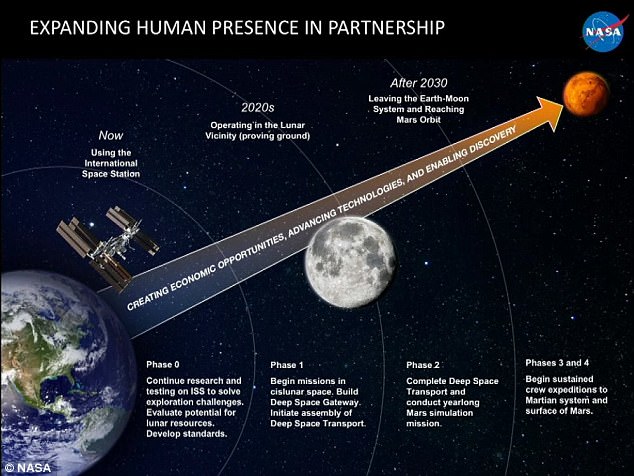NASA expects it will take about 500 days for humans to reach the Red Planet, but Canadian engineers say a laser-based system could cut that journey down to just 45 days.
The US space agency plans to send a crew to the Red Planet in the mid-1930s, around the same time China is also planning to land humans on Mars.
Engineers from McGill University in Montreal, Canada, say they have developed a thermal laser propulsion system, in which a laser is used to heat hydrogen fuel.
It’s directed energy propulsion, using large lasers fired from Earth to deliver power to the photovoltaic arrays on a spacecraft, which generate electricity, and thus propulsion.
The spacecraft accelerates very quickly while near Earth, then races toward Mars for the following month, launching the main craft to land on the Red Planet and returning the rest of the craft to Earth for recycling for the next launch.
Reaching Mars in just six weeks was something previously thought possible only with fission-powered rockets, which pose an increased radiological risk.
The spacecraft accelerates very quickly while near Earth, then races toward Mars for the following month, launching the main craft to land on the Red Planet and returning the rest of the craft to Earth for recycling for the next launch.
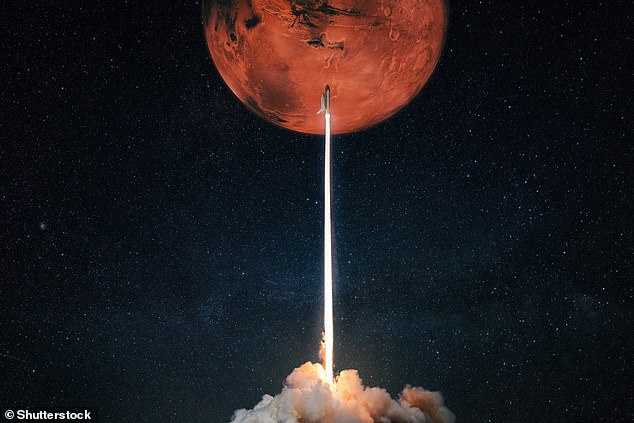
NASA expects it will take about 500 days for humans to reach the Red Planet, but Canadian engineers say a laser-based system could cut that journey down to just 45 days. artist impression
Talking to universe todayThe team behind the study said this system could allow for rapid transportation within the solar system.
Directed energy propulsion isn’t a new idea—it recently made headlines with Breakthrough Starshot, a project that aims to use lasers to send tiny light-sail probes to the nearest star system, Proxima Centauri, at relativistic speeds.
The system uses lasers to propel a spacecraft into deep space, at relative speeds — a fraction of the speed of light — and the more powerful the laser, the faster the spacecraft.
Some research predicts it could send a 200-pound satellite to Mars in just three days, and a larger spacecraft would require about one to six weeks.
The concepts require a laser array with a gigawatt capacity on Earth, which can be launched into space, and directed at a light sail attached to a spacecraft to accelerate it to high speeds – at a fraction of the speed of light.
Emmanuel Doblay, a McGill alumnus and a master’s student in aerospace engineering at TU Delft, has published a paper suggesting this could be applied to a trip to Mars.
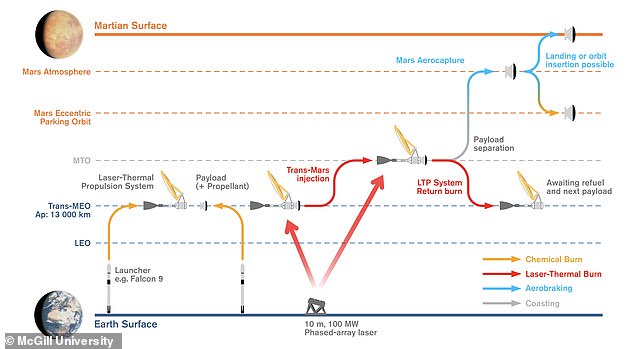
Directed energy propulsion isn’t a new idea—it recently made headlines with Breakthrough Starshot, a project that aims to use lasers to send tiny light-sail probes to the nearest star system, Proxima Centauri, at relativistic speeds.
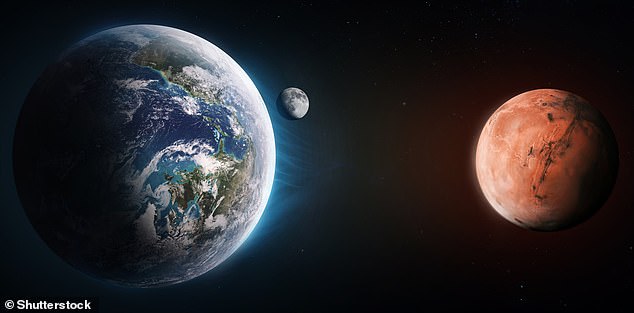
The US space agency plans to send a crew to the Red Planet in the mid-1930s, around the same time China is also planning to land humans on Mars. artist impression
He told Universe Today: “The ultimate application of directed energy propulsion would be to propel a light sail into the stars for true interstellar travel, a possibility that motivated our team that conducted this study.
We were interested in how the same laser technology could be used for rapid transmission in the Solar System, which we hope will be a near-term starting point that can demonstrate this technology.
The team’s virtual spacecraft requires a 32-foot-diameter, 100-megawatt laser array to be built somewhere on Earth.
This, given the current trend in the development of optical laser technology, would be sufficient to power a spacecraft bound for Mars.
It works by focusing a laser in a hydrogen heating chamber via an inflatable reflector – the hydrogen thruster is exhausted through a nozzle to push it forward.
“Our approach will use a more intense laser flow onto the spacecraft to directly heat the propellant, similar to a giant steam boiler,” Dobelli said.
“This allows the spacecraft to accelerate quickly while still close to Earth, so the laser doesn’t need to be focused far into space.”
“Our Grester-like spacecraft is accelerating very quickly while still close to Earth, and this method could help bring it back from Mars, where there wouldn’t be a large laser array ready to be sent on its way,” Doblay explained.
“We think we can even use the same laser-powered rocket engine to return the booster to Earth’s orbit, after it has thrown the main rover to Mars, allowing it to be quickly recycled for the next launch,” he told Universe Today.
The inflatable reflector is key to the technology working properly, as it will be designed to be highly reflective so that it can maintain more laser power per unit area than the photovoltaic panel.
That’s what makes the task possible with a relatively modest laser array – 32 feet in diameter – on the ground.
By reducing time in space, astronauts encounter lower levels of radiation, which could make the trip to Mars and back safer.
All of the new items will be required to allow the spacecraft to reach Mars within six weeks — well short of the nine months that NASA has predicted.
“Arrays of fiber-optic lasers that act as a single optical element, inflatable space structures can be used to focus the laser beam as it reaches the spacecraft into the heating chamber,” Dobelli said.
Also “developing high-temperature materials that would allow the spacecraft to break against the Martian atmosphere upon its arrival.”
The ability to break the atmosphere is the trick that will allow for a comeback.
The problem is that many of these technologies are still in their infancy, and have not been tested in the real world – raising questions about their feasibility by 2035.
“The laser’s heat chamber is probably the biggest challenge,” Doblay told Universe Today, skeptical that hydrogen gas could be contained.
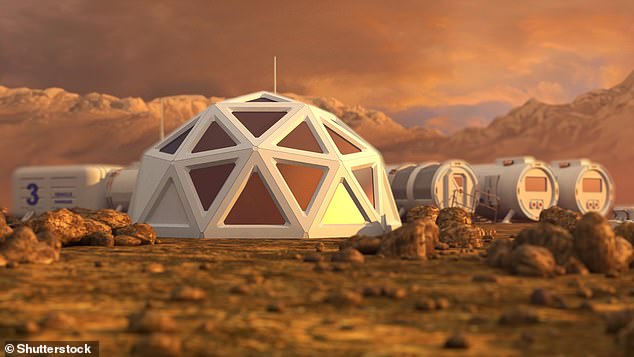
Engineers from McGill University in Montreal, Canada, say they have developed a thermal laser propulsion system, in which a laser is used to heat hydrogen fuel. artist impression
He asks if it can be contained because it is “heated by the laser beam to temperatures above 10,000 K while at the same time keeping the walls of the room cool?”
Our models say this is possible, but large-scale pilot testing is not currently possible because we have not yet built the required 100 MW lasers.
Professor Andrew Higgins of McGill, who supervised Doplay’s work, said: “Being able to deliver energy deep in space via lasers would be a disruptive technology for thrust and power.
Our study examined the thermal approach to lasers, which sounds encouraging, but the laser technology itself is a real game-changer.
The results were published in prepress on arXiv.

“Devoted student. Bacon advocate. Beer scholar. Troublemaker. Falls down a lot. Typical coffee enthusiast.”


